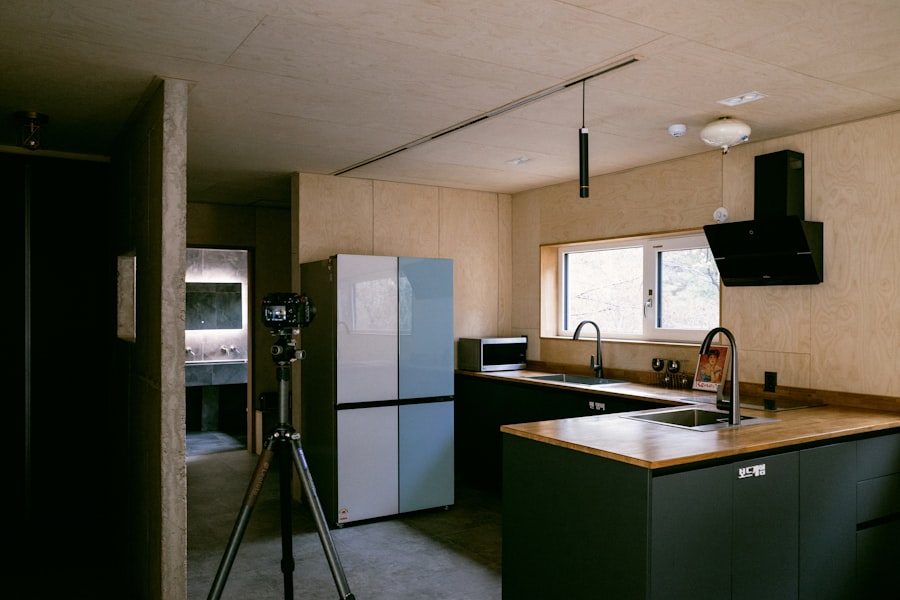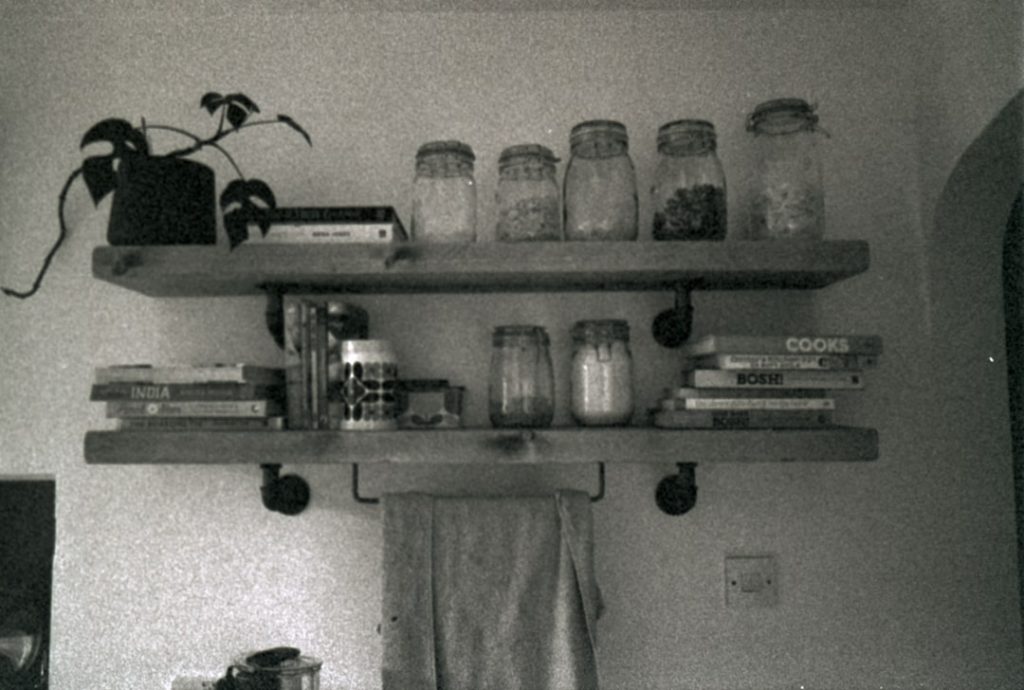Pantry built-ins offer a multitude of advantages that can transform the way you utilize your kitchen space. One of the most significant benefits is the optimization of storage. Built-in solutions are designed to fit seamlessly into your existing layout, allowing for maximum use of available space.
Unlike standalone shelving units or cabinets, built-ins can be tailored to the specific dimensions of your pantry area, ensuring that every inch is utilized effectively. This is particularly beneficial in smaller kitchens where space is at a premium, as built-ins can help eliminate clutter and create a more organized environment. In addition to maximizing storage, pantry built-ins can enhance the overall functionality of your kitchen.
They can be designed to accommodate various items, from canned goods and dry ingredients to small appliances and cooking utensils. This versatility means that everything has its designated place, making it easier to find what you need when you need it. Furthermore, built-ins can be equipped with features such as pull-out shelves, lazy Susans, and drawer dividers, which facilitate easy access and improve the efficiency of your cooking and meal prep processes.
The result is a pantry that not only looks good but also works hard for you.
Key Takeaways
- Pantry built-ins enhance organization and maximize storage efficiency.
- Selecting built-ins should be based on your pantry size and storage needs.
- Use strategic tips to keep pantry items accessible and neatly arranged.
- Customization allows built-ins to fit personal preferences and specific pantry layouts.
- Budget-friendly built-in options can combine functionality with stylish design.
Choosing the Right Pantry Built-Ins for Your Space
Selecting the appropriate pantry built-ins requires careful consideration of your specific needs and the characteristics of your space. First and foremost, assess the dimensions of your pantry area. Measure the height, width, and depth to determine what type of built-in solutions will fit comfortably without overwhelming the space.
For instance, if you have a narrow pantry, tall shelving units that reach up to the ceiling can provide ample storage without taking up too much floor space. Conversely, if your pantry is wider, consider incorporating a combination of open shelving and closed cabinets to balance accessibility with aesthetics. Another critical factor in choosing pantry built-ins is the style and material that best complements your kitchen’s overall design.
Built-ins can be crafted from various materials, including wood, metal, or laminate, each offering distinct advantages. Wooden built-ins provide a warm, classic look that can be stained or painted to match your cabinetry. Metal options, on the other hand, lend a modern touch and are often more durable and easier to clean.
Additionally, consider whether you prefer open shelving for easy visibility or closed cabinets for a more streamlined appearance. The right choice will not only enhance functionality but also contribute to the visual appeal of your kitchen.
Organizing Your Pantry with Built-Ins: Tips and Tricks

Once you have installed your pantry built-ins, the next step is to organize them effectively. A well-organized pantry not only looks appealing but also makes meal preparation more efficient. Start by categorizing your items into groups based on their use or type.
For example, keep baking supplies together, such as flour, sugar, and baking powder, while grouping canned goods and dry pasta in another section. This method allows you to quickly locate ingredients when cooking or baking. Utilizing clear containers can also significantly enhance organization within your pantry built-ins.
By transferring items like grains, snacks, and spices into transparent jars or bins, you can easily see what you have on hand and monitor inventory levels. Labeling these containers adds an extra layer of clarity and helps maintain order over time. Additionally, consider implementing tiered shelving or pull-out baskets for smaller items that might otherwise get lost in the back of a deep shelf.
These strategies not only maximize visibility but also make it easier to maintain an organized pantry in the long run.
Maximizing Storage in Small Pantries with Built-Ins
| Storage Solution | Space Utilization (%) | Average Capacity (cubic feet) | Installation Complexity | Maintenance Level |
|---|---|---|---|---|
| Adjustable Shelving | 85 | 12 | Medium | Low |
| Pull-Out Drawers | 90 | 10 | High | Medium |
| Corner Lazy Susans | 75 | 8 | Medium | Low |
| Vertical Dividers | 80 | 9 | Low | Low |
| Overhead Cabinets | 70 | 15 | High | Medium |
| Built-In Baskets | 85 | 11 | Medium | Medium |
In small pantries, every square inch counts, making it essential to maximize storage potential through clever design and organization strategies. One effective approach is to incorporate vertical storage solutions. Tall shelves that extend to the ceiling can provide ample space for storing items that are used less frequently at the top while keeping everyday essentials within easy reach at eye level.
Additionally, consider using the back of the pantry door for extra storage by installing hooks or small racks for spices or utensils. Another innovative way to maximize storage in small pantries is by utilizing multi-functional furniture. For instance, a rolling cart can serve as both additional storage and a mobile prep station when needed.
This flexibility allows you to adapt your pantry space according to your current needs without sacrificing functionality. Furthermore, consider using stackable bins or baskets that can be easily rearranged as your inventory changes. This adaptability ensures that even in a compact area, you can maintain an organized and efficient pantry.
Customizing Your Pantry Built-Ins for Your Needs
Customization is one of the most appealing aspects of pantry built-ins, allowing homeowners to tailor their storage solutions to fit their unique lifestyles and preferences. Begin by evaluating your cooking habits and dietary needs; for example, if you frequently bake or cook with spices, consider incorporating dedicated sections for these items within your built-ins. A pull-out spice rack or a designated baking shelf can streamline your cooking process and make it easier to access essential ingredients.
Additionally, think about incorporating features that cater specifically to your household’s needs. If you have children, lower shelves can be designed for easy access to snacks or lunchbox items, encouraging independence while keeping things organized. For those who enjoy entertaining, consider adding wine racks or dedicated spaces for serving dishes within your pantry built-ins.
The ability to customize not only enhances functionality but also creates a space that reflects your personal style and culinary preferences.
Maintaining and Cleaning Your Pantry Built-Ins

Regular maintenance and cleaning are crucial for keeping your pantry built-ins in optimal condition. Start by establishing a routine cleaning schedule; this could be monthly or quarterly depending on how frequently you use your pantry. Begin by emptying the shelves and wiping down surfaces with a mild detergent or vinegar solution to remove dust and spills.
Pay special attention to corners and crevices where crumbs may accumulate, as these areas can attract pests if left unattended. In addition to routine cleaning, it’s essential to periodically reassess the contents of your pantry built-ins. Check expiration dates on food items and discard anything that is no longer usable.
This practice not only keeps your pantry looking tidy but also ensures that you are using fresh ingredients in your cooking. Consider reorganizing items during these cleanouts; as your cooking habits evolve over time, so too should the organization of your pantry.
Incorporating Style and Design into Your Pantry Built-Ins
While functionality is paramount in pantry design, aesthetics should not be overlooked. The visual appeal of your pantry built-ins can significantly enhance the overall ambiance of your kitchen space. Start by selecting materials and finishes that complement your existing cabinetry and decor style.
For instance, if your kitchen features a modern aesthetic with sleek lines and minimalistic design elements, consider using glossy finishes or metal accents in your built-ins. Incorporating decorative elements into your pantry built-ins can also elevate their design. Open shelving provides an opportunity to display attractive dishware or decorative jars filled with colorful ingredients like pasta or grains.
Adding lighting within the pantry can further enhance its appeal; under-shelf lighting or LED strips can illuminate shelves while creating an inviting atmosphere. By thoughtfully integrating style into your pantry built-ins, you create a space that is not only functional but also visually pleasing.
Budget-Friendly Options for Pantry Built-Ins
Creating an efficient and stylish pantry does not have to break the bank; there are numerous budget-friendly options available for those looking to install built-ins without overspending. One cost-effective approach is to repurpose existing furniture or shelving units. For example, an old bookshelf can be transformed into a functional pantry shelf with a little creativity and some paint or stain to match your kitchen decor.
Another economical option is to explore modular shelving systems available at home improvement stores or online retailers. These systems often come with adjustable shelves and various configurations that allow you to customize them according to your needs without incurring high costs associated with custom-built solutions. Additionally, consider DIY projects such as building simple wooden shelves or using inexpensive materials like plywood for a more personalized touch.
With some ingenuity and effort, it’s possible to create beautiful pantry built-ins that fit within any budget while still meeting all functional requirements.



